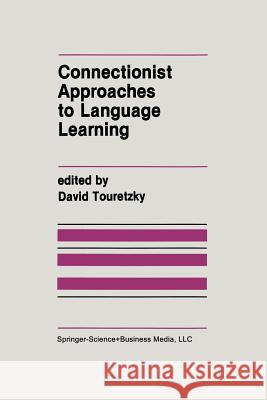Connectionist Approaches to Language Learning » książka
Connectionist Approaches to Language Learning
ISBN-13: 9781461367925 / Angielski / Miękka / 2012 / 149 str.
arise automatically as a result of the recursive structure of the task and the continuous nature of the SRN's state space. Elman also introduces a new graphical technique for study- ing network behavior based on principal components analysis. He shows that sentences with multiple levels of embedding produce state space trajectories with an intriguing self- similar structure. The development and shape of a recurrent network's state space is the subject of Pollack's paper, the most provocative in this collection. Pollack looks more closely at a connectionist network as a continuous dynamical system. He describes a new type of machine learning phenomenon: induction by phase transition. He then shows that under certain conditions, the state space created by these machines can have a fractal or chaotic structure, with a potentially infinite number of states. This is graphically illustrated using a higher-order recurrent network trained to recognize various regular languages over binary strings. Finally, Pollack suggests that it might be possible to exploit the fractal dynamics of these systems to achieve a generative capacity beyond that of finite-state machines.











